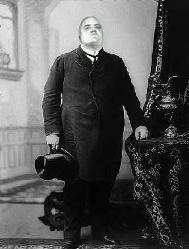As you can see, it is all very technical stuff. I use the following: 1) a clicker, like you would find at any pet store; 2) a canvas tool pouch (this one is from Home Depot) that ties around your waist; and 3) a large kong on the end of a 1" pvc pipe, my target.
The first step is to find an animal you want to train. Put that animal someplace that it feels very comfortable and go get your training tools (Note: I like train around feeding time because my animals are hungry and a little more motivated). Tie the canvas pouch around your waist, fill it with some really good treats (bite sized works best), grab your clicker and target and let's go.
Here we have Snow in her stall:
It is a really rainy day and she was a bit bored so it seems like a good time to do some work and keep us both entertained and out of trouble.
Now that we are all situated and relaxed, click the clicker and give your animal a treat. Wait a few seconds and do it again and again. You might be thinking, "this is very easy, but not very good." True, but this is just a primer for your animal. Think Pavlov and his dogs. We are teaching your animal that when she hears a click, food is coming. To break it down to the most basic point, your animal must know that click=good. Fancy types call it "Pavlovian conditioning." Your animal should get the idea after about 10-20 clicks. If your animal hears a click and looks at your hand, she's got the concept.
So your animal has learned something today, but let's not stop there. Stick your target (kong on a pipe, ball on a stick, clown nose on a broken car antena, whatever) in front of your animal's face like so:
When your animal sniffs the target or even hits it accidentally, click the exact moment she touches the target and then give her a treat. The click now marks the behavior we wish to reinforce and it serves as a sort of bridge to let the animal know that the food is coming. After a few touches, you can see the lights turn. Your animal's eyes will light up a bit and she will start moving to touch the target like so:

This very simple and fun game will allow you to do a lot of more advanced things later on and it is going to help get your animal excited about being trained. After all, it has to be fun for both of you if you both are going to be willing participants in the training process.
Note: when working with animals that have suffered some abuse and/or have not been socialized properly (in my case Ellie Mae, HT, and Petunia) , the target can be a very scary object. Ellie Mae was pretty certain that I was going to beat her to death the first time I pulled out my target (I could see the whites of her eyes which is a good sign of fear in both horses and dogs). I worked really slowly with her and kept the target in a lower, less threatening position. I have worked and/or seen professional behaviorists work with dogs that were so scared, that we started by rewarding the dog if it just looked at the target. In these situations, the dog is safely tethered to a wall and the professional tosses treats to the dog to reinforce the behavior we want repeated.
Target training teaches the animal that she can do things to elicit a click and thus, get food... pretty cool. Since we only click and reward the actions that we like, she will be more likely to repeat those actions. This is called operant conditioning (it is actually one concept of operant conditioning, but we will get to the others later). Think B.F. Skinner and his pigeons.
During the training process, your animal may try to do other things to see if she gets fed for those behaviors. If it is something you want her to do, click and reward, if not, simply ignore the behavior. You can start forcing your animal to be more precise as you both progress through the training. Thus, if you have to start out with your animal just looking at the target, that is fine, but become a little more demanding as time goes on until she is performing the exact behavior you want. Just take your time and start with something that your animal can accomplish. There should not be any flaming hoops to jump through the first day. If you or your animal are getting frustrated, make it a little easier and end on a high note.
Start slowly with a good foundation now, and your animal will be jumping through hoops before you know it.

Go have fun.






No comments:
Post a Comment